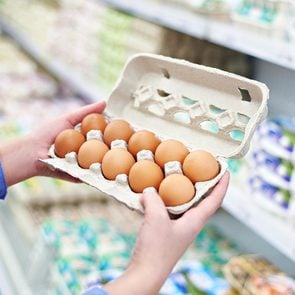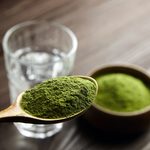The Ultimate Guide to Healthy Grocery Shopping
Find yourself spending a lot and coming home with less food than you expected? Learn to buy the most nutritious options and stay within your budget by adopting these healthy habits.

Healthy Grocery Shopping Tips
Buy Fresh
There is no simpler, no easier, no plainer measure of the healthiness of your food than whether it comes in boxes and cans or is fresh from the farm or the fields. If more than half your groceries are prepared foods, then you need to shift your cooking and eating habits back to the healthy side by picking up more fresh vegetables, fruits, seafood, juices, and dairy.
Shop the Perimeter of the Grocery Store
That’s where all the fresh foods are. The less you find yourself in the central aisles of the grocery store, the healthier your shopping trip will be. Make it a habit—work the perimeter of the store for the bulk of your groceries, then dip into the aisles for staples that you know you need. (Find out how shrinkflation is affecting your grocery bill—and how you can fight it.)
Stay Out of the Danger Zones
Think of the departments (dairy, produce, meat, and so on) as separate stores within the supermarket. You wouldn’t shop at every store at a mall the same way, would you? You know better than to idly browse through a high-end clothing store, don’t you? So apply the same approach to the supermarket. Target the sections where the healthy grocery items can be found—the produce section, primarily—and steer clear of the unhealthy temptations (the candy, ice cream, and potato chip aisles).
Shop with a List
Organize your healthy grocery shopping list based on the tip above—that is, by the sections of the store. This will have you out of the supermarket at the speed of light. Shopping with a list has benefits beyond speed and spending. By lashing yourself to the discipline of a well-planned shopping list, you can resist the seductive call of aisle upon aisle of junk food, thereby saving your home, your family, and yourself from an overload of empty calories.
Food-Shop on a Full Stomach
We’re sure you’ve heard this one before, but it’s worth repeating. Walking through the grocery store with your tummy growling can make you vulnerable to buying anything that isn’t moving. If you can’t arrange to shop shortly after a meal, be sure to eat an apple and drink a large glass of water before heading into the store. (Here’s what happens to your body when you start drinking eight glasses of water a day.)
Buy a Few Days Before Ripe
There’s no point in trying to buy fresh vegetables and fruits for your family if the bananas turn brown and the peaches mushy two days after you get them home. Buy fruit that’s still a day or two behind ripeness. It will still be hard to the touch; bananas will be green. Feel carefully for bruises on apples, check expiration dates on bagged produce, and stay away from potatoes or onions that have started to sprout. (Here’s more expert advice on how to pick the best fresh fruit.)
Buy in Season
Sure, it’s tempting to buy strawberries in December, and once in a while that’s fine. But fresh fruit and vegetables are best when purchased in season, meaning they’ve come from relatively close to home. They often cost less, are tastier, and have less risk of pathogens such as E. coli.
Buy Organic
Sure, it costs a few dollars more. But a study in the Journal of Agricultural and Food Chemistry found that organically grown fruits and vegetables contain higher levels of cancer-fighting antioxidants than conventionally produced foods. However, if organic is too pricey for you, don’t worry; organic or not, fruits and veggies are key to a healthy larder. (Here are 12 groceries that are worth buying organic.)
Stock Up on Canned Beans
Although they may have a bit more sodium than we like, that’s easy enough to get rid of with a good rinse in the sink. Beans can be mixed with brown rice, added to soups and stews, pureed with onions and garlic into hummus for dipping, or served over pasta for a traditional pasta e fagioli.
Cross Off Corn Syrup
Reject foods and drinks made with corn syrup. Corn syrup is a calorie-dense, nutritionally empty sweetener perhaps even worse than refined sugar. A shocking number of foods and drinks are thick with it, including such apparently healthy grocery items as fruit juices, pre-made spaghetti sauces, and even bread. If a food has corn syrup in its first four ingredients, then it lacks the wholesomeness and healthiness you want. (Find out how to read nutrition labels like a pro.)
Choose Strong Cheeses
Instead of cheddar or Swiss, pick up feta, fresh Parmigiano-Reggiano, or a soft goat cheese. These strongly flavoured cheeses will satisfy your yen for cheese without adding to your waistline.
Buy Plain Yogurt and Flavour at Home
Pre-flavoured yogurts have oodles of sugars that destroy any healthy benefits they once had. If you add a teaspoon of all-fruit jam at home, it’ll still taste yummy, you’ll consume far fewer empty calories, and you’ll save lots of money.
Buy Healthy Add-Ins for Plain Cereal
These include raisins, fresh berries, dried berries, almond slivers, pumpkin seeds, sesame sticks, and bananas. The best breakfast-cereal strategy is to buy unsweetened cereals and then add in your favourite flavours. That helps you bypass all the empty sugary calories—and lets you enjoy the cereal more.
Now that you’ve got these healthy grocery shopping tips under your belt, check out the best apps to save money on groceries.






